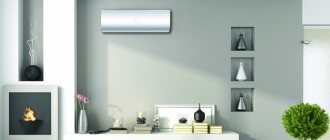A projector is a device that connects to a video camera, laptop, PC, or tablet in order to display the image on a large screen. The remote control is used to control the operating device. The design of a video projector is quite complex, and may differ depending on the technology used to compose the image. Exactly how the projector will work depends on the technology used. Today on the market you can find LCD, DLP, LCoS models. Let's take a closer look at these and other, less popular technologies.
LCD projectors
Today LCD models are the most common due to their affordable cost. However, apart from the low price, they are unlikely to stand out with other advantages. Of course, you can watch videos at home on such projectors, but you need to do it from afar. Up close, only multi-colored dots will be visible. In addition, the contrast also leaves much to be desired. We should not forget that these models are initially positioned as budget ones, so the lamp installed in the projector is the cheapest, and the matrix resolution does not reach HD. You can only enjoy viewing on this projector in completely darkened rooms. However, even in such conditions, due to the low quality of the transmitted image, some particularly small details will simply not be visible.
Projectors with three LCD matrices have higher image quality, which does not deteriorate even when viewed closely. The use of improved image transmission technology conveys many more color tones. In 3LCD video projectors, image enhancement is achieved through the use of special technologies. Each color has its own monochrome matrix. First, each light stream passes through its own matrix, and then, using a prism, they are combined into one bright and multi-colored image.
Working principle of a 3LCD projector
Although 3LCD projectors have much better brightness and color reproduction than their budget counterparts, they also have their drawbacks. Compared to DLP projectors, the contrast is not too high. This is due to the characteristics of the LSD matrix. None of them, even the most expensive ones, are capable of providing complete color non-transmission; as a result, it will not be possible to achieve a deep black color.
In addition, all liquid crystal matrices require regular blowing with cold air. This procedure is mandatory in order to reduce the negative impact of high temperatures on them. However, constant airflow causes the formation of a layer of dust on the matrix, which cannot be avoided even by installing filters and regularly cleaning them.
You may be interested in: comparison of DLP and LCD projectors.
How does XGIMI portable projector work?
Small and compact XGIMI projectors from China have been conquering the Russian market for more than 7 years. Many users call devices from the brand as “Xiaomi in the world of projectors.” Indeed, these devices are very different from similar devices that are on the market. Let's look at such a projector within the XGIMI MoGo model.
- The projector is very compact. Well, it needs to be hung on a wall or ceiling. The gadget easily fits into a backpack or travel bag. You can take it with you outdoors or on a hike. XGIMI MoGo is more like a portable speaker than a projector.
- The built-in 10,000 mAh battery is responsible for autonomy. This is definitely not something you will find in modern projectors. The battery will last for 2.5 hours of continuous video.
- The projector uses DLP technology. Emitter power 210 ANSI lumens. This means that the picture will be quite bright, clear and saturated even during daylight hours.
- A Harman/Kardon speaker system is already installed on board, which is something you won’t find on conventional projectors. These are small 3-watt speakers with good sound.
- Software - Android TV with Google Assistant. This means that the device can not only show movies, but also access the Google ecosystem. From it you can watch, for example, YouTube or run a simple game.
Separately, I would like to say about the very beautiful design of the device. Many users say that XGIMI projectors look more like Apple devices rather than Chinese consumer goods.
DLP technology
The operation of DLP projectors is based on the action of a special DMD chip, which contains many small rotating mirrors. They are responsible for the formation of the matrix.
High-resolution DMD chips contain a huge number of microscopic mirrors. The principle of operation is that light from the lamp passes through a disk with multi-colored sectors, which rotates, and hits the matrix. As a result, when the projector is turned on, the image appears as the light beam passes through the corresponding colored sectors of the disk.
The controls in DMD chips are located differently than in LSD models. They are located behind the mirrors, so DLP projectors have almost no distance between pixels.
The technology used in these models allows you to obtain an image with increased contrast. This can be achieved due to the fact that the mirrors, which are responsible for the black pixels, are located in a certain position. Because of this, it is possible to achieve the appearance of a true black color.
Although DMD chips are much less susceptible to high temperatures, there is a heat sink located on the rear side. At the same time, there is no need to worry about dust - the projector optics are located in a hermetically sealed housing.
Currently, LED-DLP projectors are most widespread. They do not use light passing through a moving wheel. Instead, there are colored LEDs that turn on one by one. Their brightness is too low. However, unlike gas-charging lamps, LED lamps are small in size and weight, and also last much longer.
The main disadvantage of DLP projectors is the appearance of a rainbow effect, which is especially noticeable during dynamic scenes. This is due to the fact that color components are projected one at a time and can be mixed with frequent frame changes.
In addition, gray color is very difficult to reproduce on DLP projectors. The mirror must be rotated as accurately as possible so that the eye can catch the sequence of pixels of different colors changing into a gray tint.
Pros and cons of projectors
Projectors offer a large screen diagonal, which is a strong argument in favor of purchasing this device. You can get information to more people. It all depends on preferences and the size of the room. The larger the image, the brighter the impression. While there may be black bars on the monitor due to different video formats, there will be no such problems with the projector. It is easy to customize the screen to any format. Digital projectors often include support for 3D images without loss of quality. If you create the right environment by darkening the room, you can get a better image than an LED monitor.
There are also disadvantages. The most expensive element of a projector is the lamp, and it breaks down approximately once every 4 years. Replacing it will entail considerable financial costs. The projector is noticeably noisy due to the active cooling of the lamp. When watching videos or slideshows, you have to endure the sound of running fans.
LCoS (SXRD, R3LCD, D-ILA)
The developers of this technology managed to eliminate all the shortcomings of previous models of video projectors. At the same time, all their most positive qualities were preserved and improved.
Here, the image is formed, as in 3LCD projectors, by passing rays through matrices. However, they do not pass through, but are reflected from a layer of mirrors, as in DLP models. The pixel controls are on this mirror layer behind the pixels, which are placed close together. This eliminates the rainbow effect and improves image quality.
Of course, this technology has disadvantages. The main one is the high price. LCoS projectors are significantly more expensive than similar DLP and 3LCD models, which have the same, and sometimes even higher, characteristics. Therefore, these projectors are currently used only by professionals to create high-quality presentations and installations.
This is interesting: rating of the best projectors for the home in 2021.
Making a projector with your own hands using a phone
Modern gadgets often have a solid extension, through which you can get high-quality video broadcasting. You can watch any movies on the Internet, as well as self-made videos. Let's take a closer look at the stages of manufacturing such a device.
The simplest projector
To make a simple device, you will need a minimum of parts. However, you shouldn’t count on full image quality in this case, since most smartphones are not capable of transmitting images in sufficient brightness over long distances. However, this is a great alternative if you don't have a projector at all.
What you need for work
To construct a projector, you will need a cardboard or wooden box, as well as a smaller cardboard case in which you need to make a niche for a smartphone. To reduce light reflection from the walls of the box, you need to paint it black. Shoe polish or matte paint is ideal for this. You will also need a lens.
Preparing all elements
The sequence of operations is as follows.
- We arrange the box correctly. To do this, paint the inside of the body with a dark color.
- We place a smaller box in it so that the prepared niche into which the smartphone will be inserted is the size of the screen.
- We direct the open part to the free edge of the second box.
- We prepare a pendant or stand for the lens, place it on the table, and attach the magnifier to it.
- It can be attached to a cardboard box, having previously cut out a special niche for this.
- To prevent the magnifier from falling, it is secured with a glue gun.
Assembly of the structure
When all the parts are arranged, all that remains is to assemble them into a single whole. We insert the switched-on smartphone into the prepared niche and direct the image through the lens onto the canvas installed as a screen.
It is convenient to use such a film projector if you have a remote control that works via Wi-Fi, otherwise you will have to remove the phone from the box for each switch.
Holographic projector manufacturing process
Holographic projectors are able to accurately convey the image from any mobile gadget, provided that maximum brightness is turned on. You can find the parts in your workshop or spend a little money purchasing a few suitable items from the store.
List of materials and tools
To quickly create a 3D projector you will need:
- CD case;
- glue gun;
- painting or stationery knife;
- pliers;
- smartphone;
- special video with holographic graphics;
- corresponding drawing.
It is important to comply with all the dimensions specified in the drawing, otherwise it will be impossible to achieve clarity of the image.
Manufacturing parts for the projector
To create a truncated pyramid, we will use a drawing that will allow us to calculate the dimensions of each part.
Let's consider a step-by-step algorithm:
- Using the drawing, mark four identical sketches on the plastic from the disc case, and, using a utility knife, carefully cut them out.
- We glue all these parts together with a glue gun so that we get a truncated pyramid.
- When nicks appear on the ends of the patterns, they are processed with sandpaper.
- We install the smartphone on the top of the pyramid so that the display is located in the center.
- We put dark or matte cardboard on top (so that the animation is not mirrored).
Similarly, you can use the projector in a vertical position. But for this you will need to make stands that hold the smartphone and matte cardboard.
Adjusting the image on your smartphone
In order for the picture to be fully displayed on a matte surface, you need to make some screen adjustments. Be sure to set the brightness to the maximum level, adjust the color so that it is natural. In this situation, it is advisable to set the contrast mode to automatic and the background color to the “Standard” position.
CRT technology
This technology can be considered the oldest, since it is based on a cathode ray tube (CRT). Although CRT technology has been used for several decades, nevertheless, it is still relevant and in terms of image quality characteristics (clarity, resolution, color rendition) it is not inferior to modern and more expensive methods of image formation. Another advantage of CRT is the greater reliability of electrical circuits and the duration of continuous operation of the tube, exceeding the limit of 10,000 hours.
This technology also has a wide dynamic brightness range and black depth that no other technology can provide.
Despite their undoubted advantages, CRT devices are still inferior in some respects to modern devices.
- The units have a large mass (several tens of kilograms). If the manufacturer made them a little lighter, it would be possible to more conveniently transport and install this equipment.
- Brightness levels range from 100 to 300 ANSI lumens, while in modern devices the level can reach 10,000 ANSI lumens or more. For this reason, watching videos is only possible in a well-darkened room.
- To achieve good image quality, a lot of adjustments are required, and sometimes it is difficult to do without the involvement of a specialist.
It is worth noting that today it is almost impossible to find a projector of this type in retail sales. It has been superseded by more modern technologies described above.
Inside the CRT video projector there are 3 CRTs with screens with a diagonal of 7 to 9 inches. Each CRT is designed to output one color (green, red, blue) of the RGB color model.
The principle of operation of the projector can be described as follows: the input signal is divided into components by color, which are involved in the control of modulators. At the same time, the intensity of the beam begins to change. At this moment, the beam, passing through the magnetic field and deflection system, subjects the surface of the phosphor-coated screen to scanning from the inside. After this, a one-color picture is created on the screen. Next, it is projected through the lens onto an external screen.
As a result, 3 images are simultaneously projected on the external screen, and when mixed, a full-color picture is obtained.
The principle of operation of a film projector: circuit and device
If you have an old non-working device on hand, then understanding its circuit is extremely simple. It is enough to disassemble it and study all the components. If this is not possible, consider the simple device in the photo. The main condition for organizing a home movie screening on the screen is the presence of high-precision elements.
Thus, a professional projector circuit is based on the following details:
- light bulb for illumination (any source can be selected, even a powerful LED);
- lens-condenser;
- color wheel or matrix (on modern devices);
- aspherical lens;
- DLP chip;
- lens;
- screen (multimedia boards are often used for such purposes).
The focused light from the bulb and a high-quality matrix (the kind you can get from any smartphone or tablet) combine to deliver an image, magnified through the lens, to a screen mounted on the wall. This can be white sheets, oilcloths, and even a light background of furniture or wallpaper.
Image quality is achieved through lenses and lamp brightness. Therefore, you should choose a source with high efficiency. In addition, it is necessary to correlate the size of the screen and the emission power of the light flux. Simply put, the farther the projection is from the light source, the more powerful the light bulb you need to take.
Multimedia Projectors: Basic Technologies
Among the technologies developed to date for displaying an image on a projection screen, four main ones can be identified, which are most widely used in commercial products from leading manufacturers and differ primarily in the type of element used to form the image:
In each case, the properties of the shaper determine the main advantages and disadvantages of the technology, and, consequently, the scope of application of projection devices created on its basis.
DIY projector based on a tablet
All modern tablets have a lot of capabilities, so you can watch movies and your favorite videos on the big screen through them. The likelihood that the picture will be distorted is minimized, since the screen parameters allow for high-quality image transmission.
What do you need for work?
In order to prepare a simple home theater with your own hands, you need to have:
- two cardboard boxes of different sizes;
- stationery knife;
- a lens with good focusing;
- tablet;
- pistol glue or PVA;
- black paint.
Manufacturing of structural elements and step-by-step instructions
To properly make a video projector with your own hands, we advise you to follow the instructions given below.
| Illustration | Description of action |
| Take a cardboard box. We outline the lens on the side and cut out a niche for installing the magnifier. | |
| We coat the end of the lens with glue and install it in the cut circle in the box. Paint the inside surface with black paint and let it dry. | |
| We are preparing foam plates that will be inserted inside the box. They will play the role of a tablet stand. The dimensions of the foam should be slightly less than the distance between the walls. | |
| A niche for the tablet is made from one piece of foam plastic. Its dimensions must match the parameters of the gadget. | |
| We glue one part to the other to get this design. | |
| We place the tablet inside and turn on the video we want to watch. Point the lens at a light canvas and enjoy watching. |
Good to know! It is important to set the backlight settings on your tablet. For ease of switching between videos, you can connect the mouse via a Bluetooth connector. Due to the physics of the lens, the gadget must be installed in an inverted 180º position.
Operating principle [edit | edit code ]
In black and white projectors of this type, a small image is created on a kinescope screen with a diagonal of 7 to 12 inches, and then enlarged on a large screen using an optical system. Color video projectors use three kinescopes with different phosphor glow colors: red, green and blue. Each of the picture tubes reproduces one of three partial color-separated images, which are optically combined on the screen using lenses. In most cases, each of the picture tubes is equipped with an individual optical system, most often of the catadioptric type. This is explained by the higher luminous efficiency of mirror-lens systems, which are 3 times superior to lens systems in this parameter [2].
The principle of three picture tubes was first used in an experimental color television system created by RCA in 1947 [3]. However, mass production of such devices was launched only in 1972 by Sony and Advent [4]. The fundamental limitation of such a system is the maximum brightness and size of the image, the area of which usually does not exceed 12 square meters [2]. The reason for this lies in the relationship between the brightness of the phosphor and the service life of the kinescope. If the brightness is too high, the durability is sharply reduced, and in addition, the risk of bremsstrahlung increases due to the high anode voltage of the tubes, reaching 50 kilovolts. The highest luminous efficiency was achieved in video projectors of the NovaBeam system, implemented in 1979 by the American Henry Kloss [5]. Mirror-lens optics began to be built directly into each of the picture tubes, increasing luminous efficiency and eliminating most adjustments. Video projectors of this type provided high-quality images on screens with a diagonal of up to 3 meters [6].
There are no restrictions on brightness and screen size in light valve projectors with a powerful lamp as a light source. Modern light valve video projectors with DLP or LCoS matrices are free from these limitations, and the brightness and size of the image they produce depend only on the power of the lighting system. Currently, video projectors with high-brightness picture tubes are considered obsolete [7].











